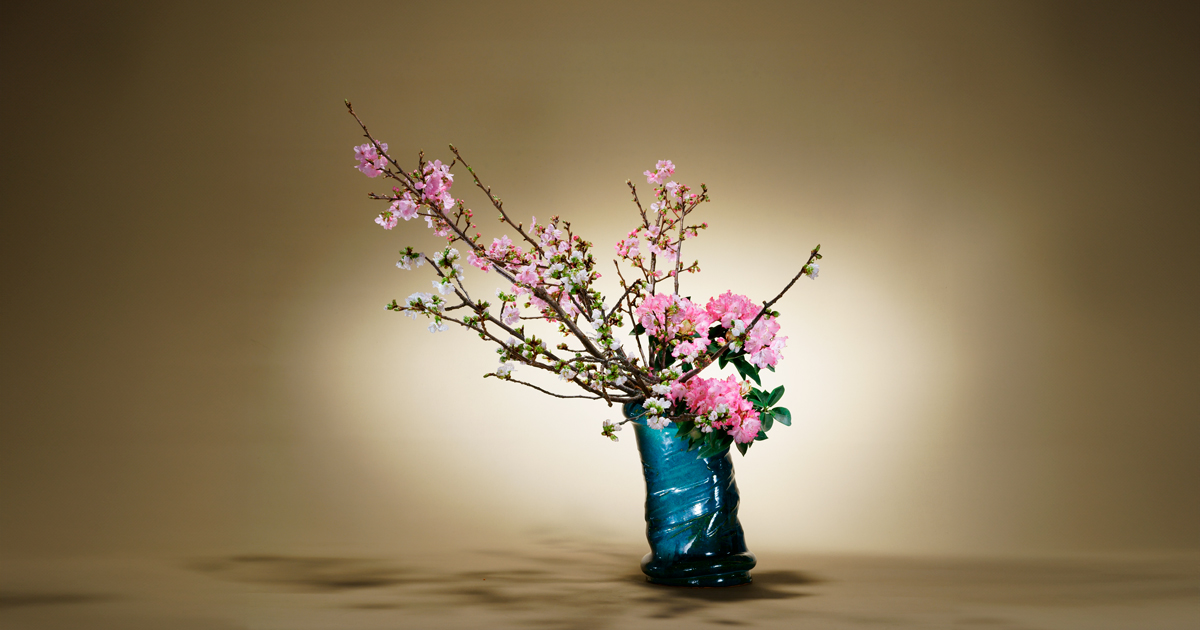
Special Experience
Tokyo
Enter the World of Ikebana through the Historic Sogetsu School and Discover the Depths of Japanese Aesthetics and Spirituality
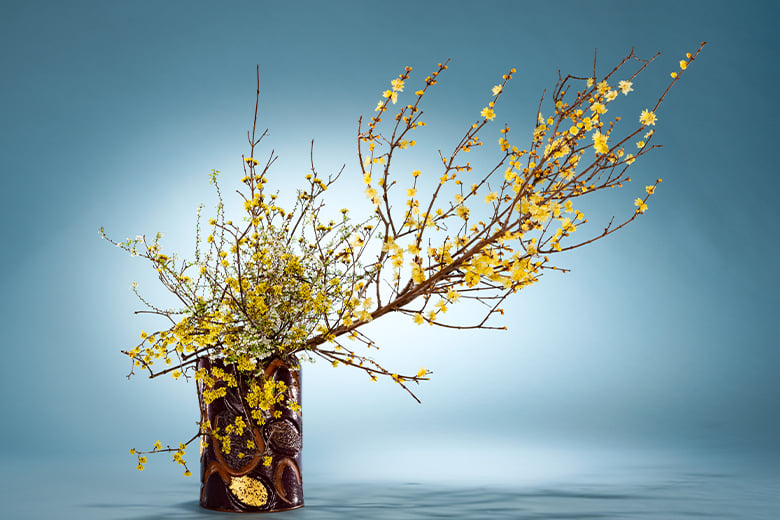
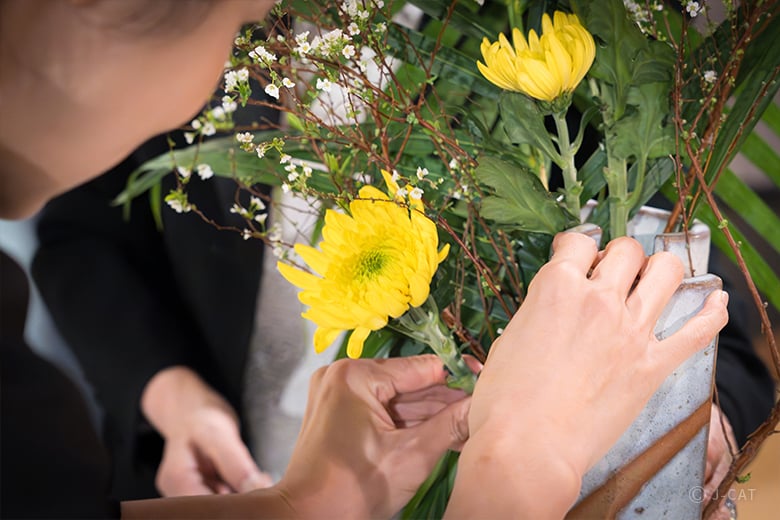
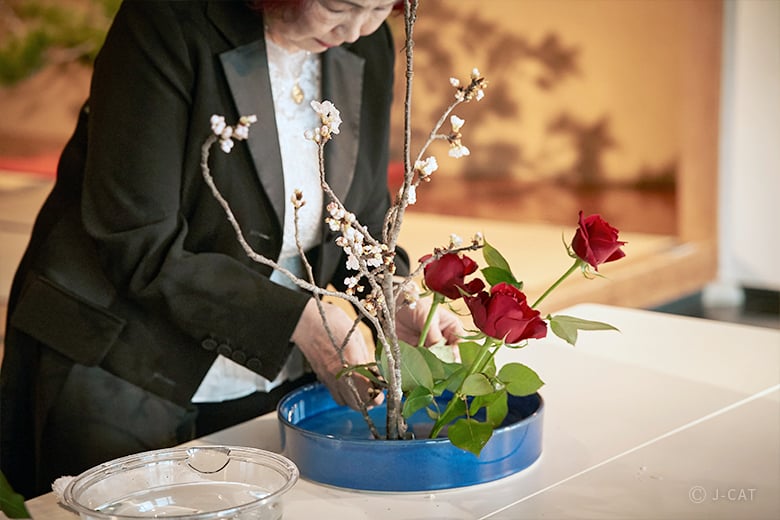
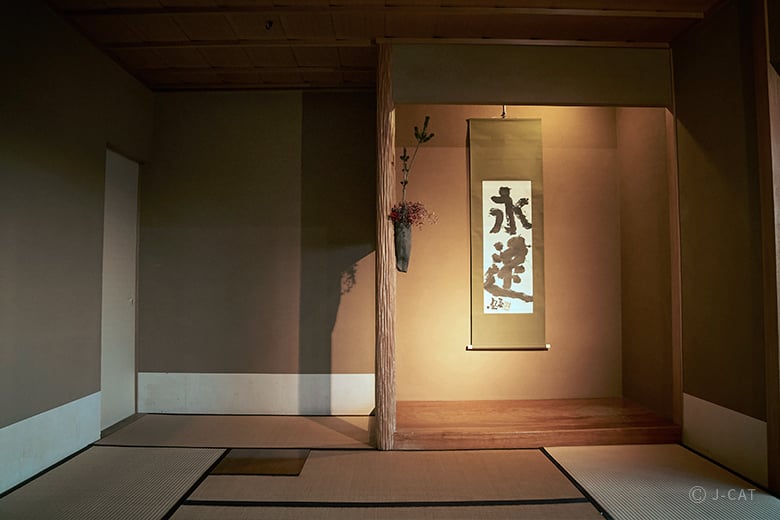
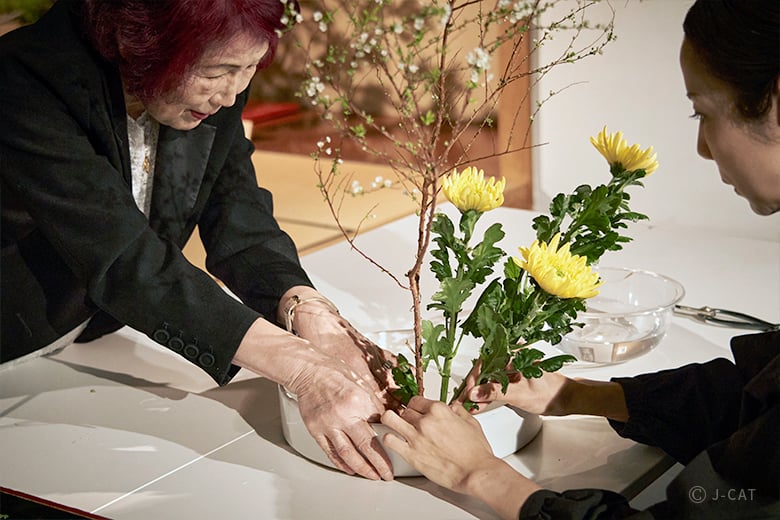
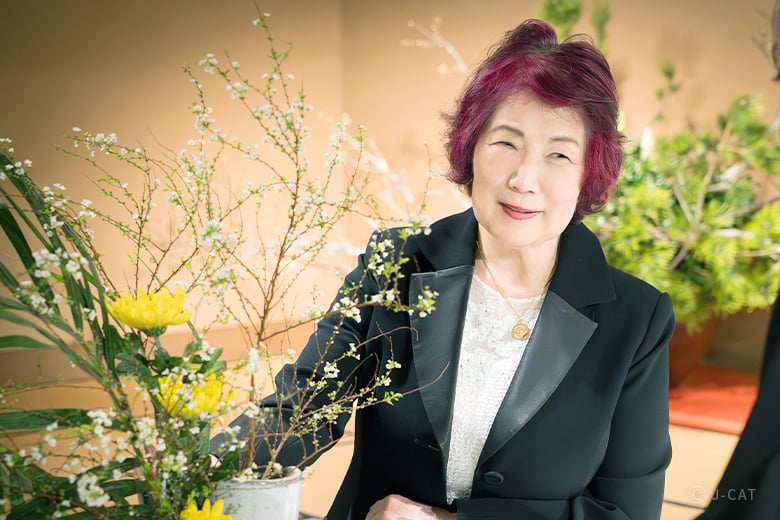
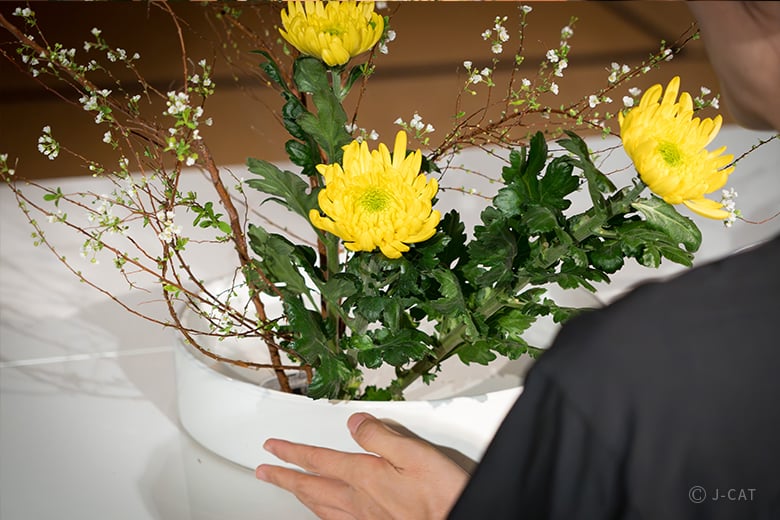
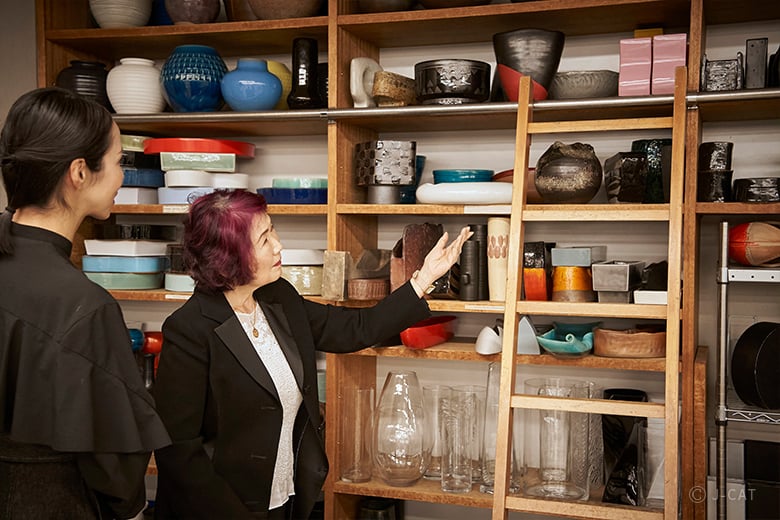
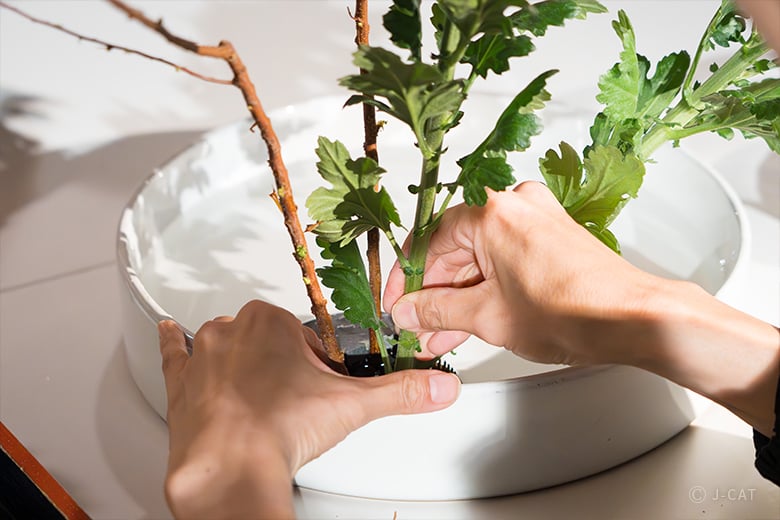
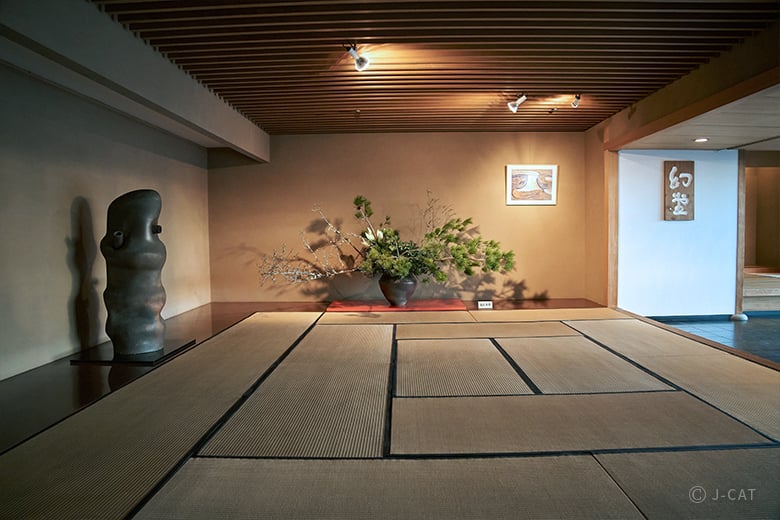
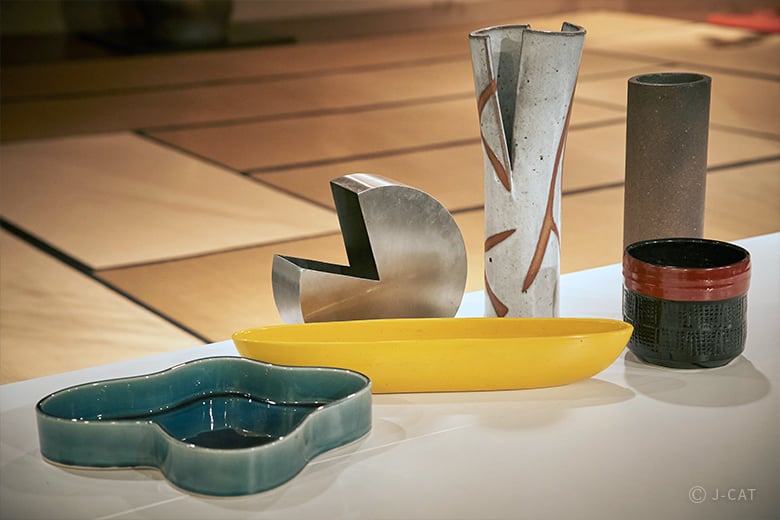
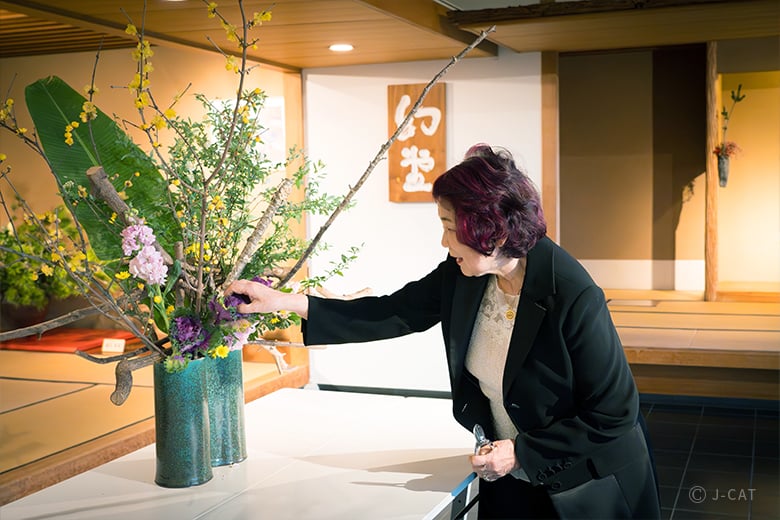
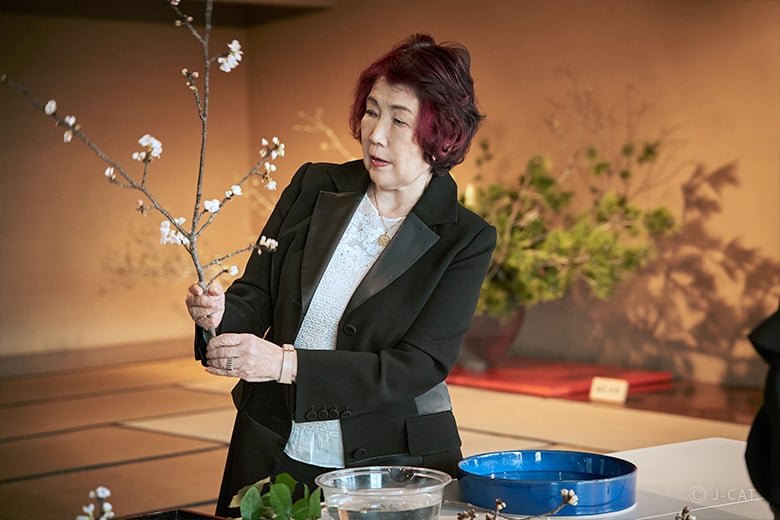
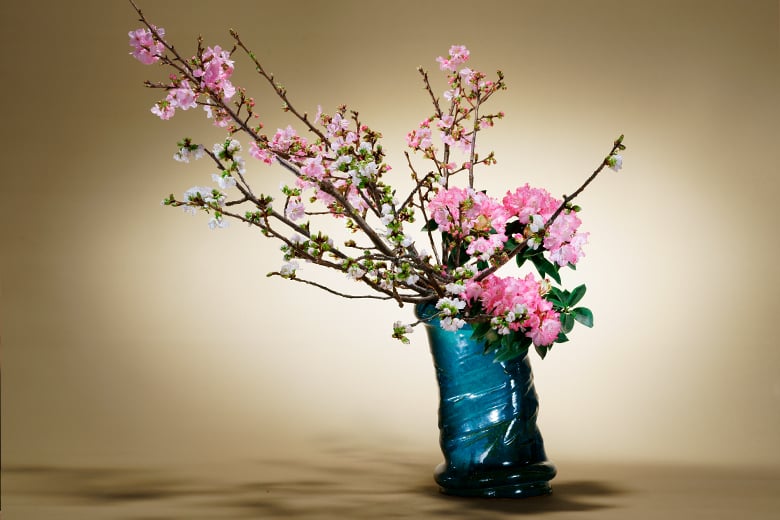
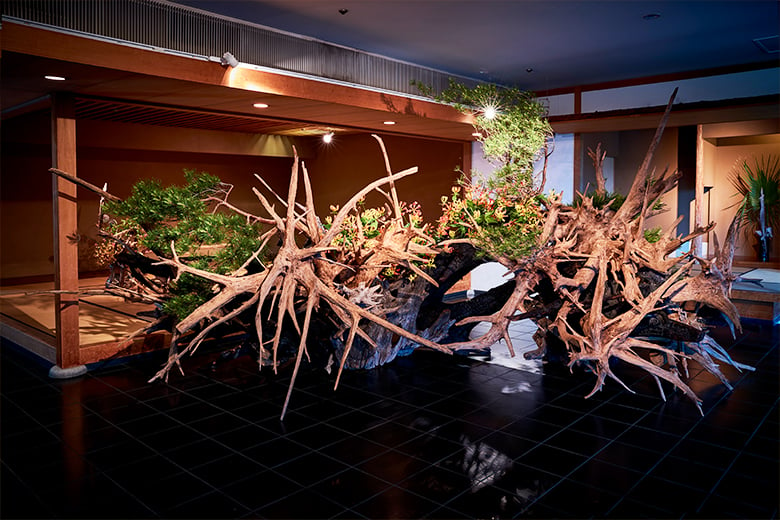
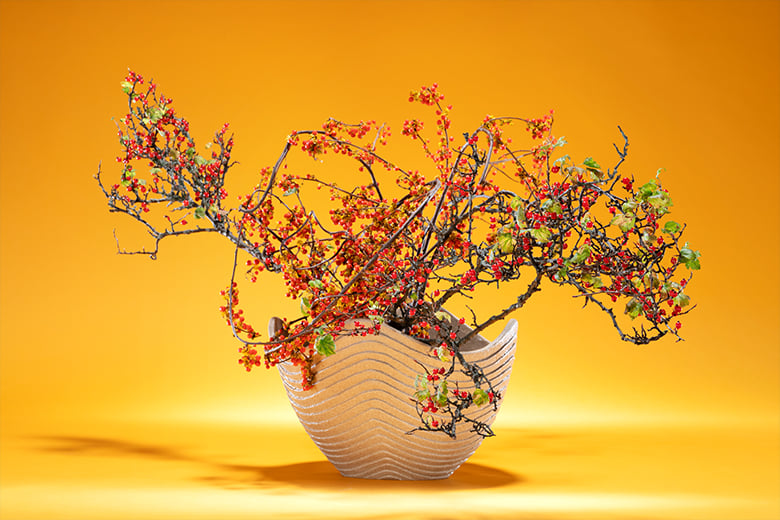
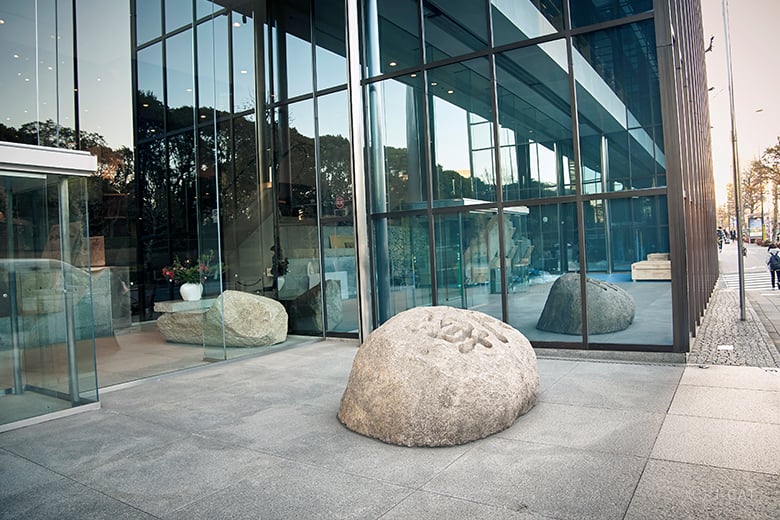

















Overview
The art of ikebana has been cultivated over the centuries, and in central Tokyo one of its finest flowers is blooming: the elegant Sоgetsu Kaikan, headquarters of the renowned Sogetsu School of Ikebana, overlooking the verdant expanse of Akasaka Imperial Estate (where the Imperial Family has residences). Your small group can enjoy a private ikebana lesson under one of the few master instructor-rank practitioners of Sоgetsu ikebana. Through your two creations – one a basic upright style moribana, and one a free-style arrangement – experience the elegance of ikebana, its harmonizing power over its spaces, and its Japanese sense of aesthetics and spirituality.
Key Features
・A private group room in the headquarters of the Sogetsu School of Ikebana, designed by the world-famous Pritzker Prize-winning architect Kenzo Tange (1913-2005).
・Instruction from a lifelong Sogetsu ikebana practitioner whose skills and career have earned them the inimitable rank of official master instructor.
・An unparalleled experience recommended for lovers of flowers, interior design, historic traditions, and Japan’s unique aesthetic and cultural sensibilities.
Tokyo
90mins
from ¥47,000 /person
1 - 10 participants
Available in English
Cancel free up to 11 days prior
Details
A Hallowed Space of Art with a Face that Mirrors the Changing Skies
The Sоgetsu Kaikan is the creative epicenter of Sоgetsu Ikebana, located along Tokyo’s famed Aoyama Avenue, and easily accessible from the Akasaka and Roppongi areas of the metropolis. Its mirrored glass facade presents an arresting and dynamic reflection of the skies above. This impressive architectural achievement, the work of Pritzker Prize winner Kenzо Tange, was completed in 1977. Greeting visitors at its entrance is a stunning rock garden designed by the world-famous Japanese-American sculptor and landscape artist Isamu Noguchi(1904-1988).

Seasonal ikebana arrangement in a traditional tatami room: pictured here a sweeping work of pine, mossy plum, camelia, and lilly by Sanae Fukunaga
Immerse yourself in the world of Sogetsu-style ikebana at the school’s headquarters, venerated as a cathedral of art. On its fifth floor – the venue for this experience – sits a majestic traditional tatami space adorned with seasonal ikebana arrangements and gorgeous wall scrolls. It is hard not to be overwhelmed by the hallowed beauty of the space.

Koka Fukushima, a master instructor of the Sogetsu Headquarters
Master instructor is the highest rank at the Sogetsu Headquarters, appointed directly by the iemoto head. Among these, the English speaker Koka Fukushima will guide you. Since beginning ikebana under her mother’s instruction at the age of 14, Fukushima has gone on to conduct over 100 workshops and demonstrations in 48 countries. You can trust in her extensive teaching experience and the ikebana skills she has devoted her life to cultivating.
The Unique Character and Historical Context of Ikebana
First, an overview of ikebana’s history and the Sogetsu School. Japanese aesthetics lean minimalist, with an emphasis on eliminating excess and spotlighting the beauty of individual highlights. Ikebana developed from these sensibilities, influenced by the country’s unique and highly seasonal natural environment.
In Japanese, ikebana is also sometimes referred to as kado, literally “the way of flowers” after the naming pattern of sado (“the way of tea”), kodo (“the way of incense”), kyudo (“the way of the bow”), and budo (“the way of the warrior”), or as they are respectively known in English: tea ceremony, incense ceremony, Japanese archery, and Japanese martial arts.
Ikebana traditions date back to the late-14th Century to mid-15th Century Muromachi period, a high point of cultural development during which Noh theater and tea ceremony were also in their early heyday. The Sogetsu School itself began in 1927 under founder and first iemoto Sofu Teshigahara. Today it is counted as one of the three major schools of ikebana, with an individualistic and freely expressive style that seeks innovation over convention.

Ikebana developed from Japan’s delicate aesthetic sensibilities(work by Akane Teshigawara
Comparisons between Japanese ikebana and European flower arrangement traditions are perhaps inevitable, but Fukushima emphasizes the distinctness of their values and aesthetics. Ikebana literally means “living flower,” and according to Fukushima, its “guiding principle is harmony with the space, as if the flower grew and bloomed there.” A visual telltale that distinguishes ikebana from European flower arrangement is the use of branches in its arrangements, to draw lines that define the flow of the space. Also characteristic to ikebana is the kenzan, literally meaning “sword mountain” in Japanese, and in English sometimes referred to as the “frog” or “pinfrog”: a densely needle-covered stand that acts as a base for flower stems.

Here Fukushima works with a cherry branch adorned with lovely blossoms
A Personal Demonstration from a Master Instructor
After learning the concepts of ikebana, your instructor demonstrates one basic upright style moribana, and one free-style arrangement. Adjusting the length, direction, and relative position of the three main branches creates a beautiful three-dimensional frame. This deceptively simple basic upright style epitomizes ikebana expression, which Fukushima encapsulates in her condensed demonstration, showing how to choose branches and determine the optimal lengths and angles so as to perfectly complement and perfectly frame the star of the show in harmony with the space. Fukushima stresses the importance of these fundamentals, calling them the “tools that free expression is built with.”

The arresting moment when life itself fills an empty space with its regal vitality
The Sоgetsu style of ikebana is defined by three key elements: line, color, and volume. The importance of each will become clear as your instructor talks you through the steps of her work. A space is created with the main branches (lines), positioned in a flat basin vase. There, seasonal flowers (color) bloom, surrounded by thick growth (volume), creating art overflowing with the vitality of plant life.

A glorious free-style arrangement of larger branches, fragrant wintersweet, and common stock
Next comes the instructor’s demonstration of free-form arrangement, in which different vases, flowers, and other plants are used to create innovative original works with moods all their own. Here the fun is in the unpredictability of the encounter, and in highlighting the unique individuality of each flower. When your work is completed, feel free to take photos – but participants are asked to refrain from recording videos during the instructor’s demonstrations.

The priceless opportunity to see a work of art taking shape before your very eyes(Work by Akane Teshigawara, actual works may vary)
The Delight of Self-expression through the Living Touch of Flowers
At last, it’s your turn to try your hand, starting with the basic upright style moribana. Proceed with confidence whatever your experience level, with your instructor by your side to offer attentive guidance on every little detail from how to hold the scissors to how to proceed from step to step. In your hands, you hold the beauty of Japan’s very seasons. Move on next to your free-style arrangement. Here, you start by choosing a vase from a wide variety including chic metal vases as well as original Echizen-ware ceramics made in Sogetsu’s Fukui Prefecture pottery studio. The vase and seasonal flowers you choose serve as the starting point and inspiration for your arrangement.

Make your choice from a variety of distinctive vases
Your instructor will give you thorough feedback on your completed work in a precious opportunity to receive individualized attention from a master instructor of the headquarters, and to learn and experience far beyond the norm. Should you wish to take your flowers home with you after the experience, simply let your instructor know.

Luxuriate in therapeutic close contact with the beauty of flowers
Ikebana is a form of creative expression, but that’s not all it is. Close-up focused interaction with these beautiful living things has a calming, therapeutic effect, bringing you closer to nature and the seasons. Closer, too, to your own individuality: even with the exact same flowers, no two people will create the same arrangement. Leave with new skills to use at home, to bring the living spirit of ikebana to your own favorite spaces.
Discovering the Japanese Spirit Dwelling within the Art of Ikebana
In Japan, flowers and trees have been incorporated into a variety of activities and rituals since ancient times, building a close relationship between these plants and day-to-day human life. Fukushima hopes that learning about ikebana and the way it expresses the spirit of Japan will cultivate an interest in the depth and beauty of the country’s cultural traditions. Come and visit the Sogetsu Kaikan to experience the essence of Japanese sensibilities and spirit for yourself.

Enjoy attentive feedback on your work from a master of the art

A precious experience in the profound intricacies of Japanese culture through ikebana (Pictured: work by an experience participant)
Sogetsu Foundation

Sogetsu Foundation
Founded in 1927 by its first iemoto Sofu Teshigahara, Sogetsu is an Ikebana style prizing individuality, free expression, and innovation over convention. Its dynamic works incorporate flowers, leaves, and even everyday objects and other materials such as steel. It conducts ikebana classes across Japan and around the world for all lovers of flowers.
Instructors:
Koka Fukushima
Other
Location
Sogetsu Kaikan
Minato Ward, Tokyo
Request for booking
Select first preferred date (JST)
January 2026
Sun
Mon
Tue
Wed
Thu
Fri
Sat

Instant Booking

Request Booking

17
Full

17
Unavailable
Tokyo
90mins
from ¥47,000 /person
1 - 10 participants
Available in English
Cancel free up to 11 days prior
Things to know
Contact Us
If you have any questions, please contact us using the form below.
We also accept bookings from corporate clients and travel agencies.